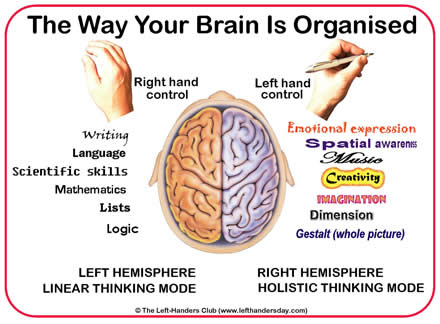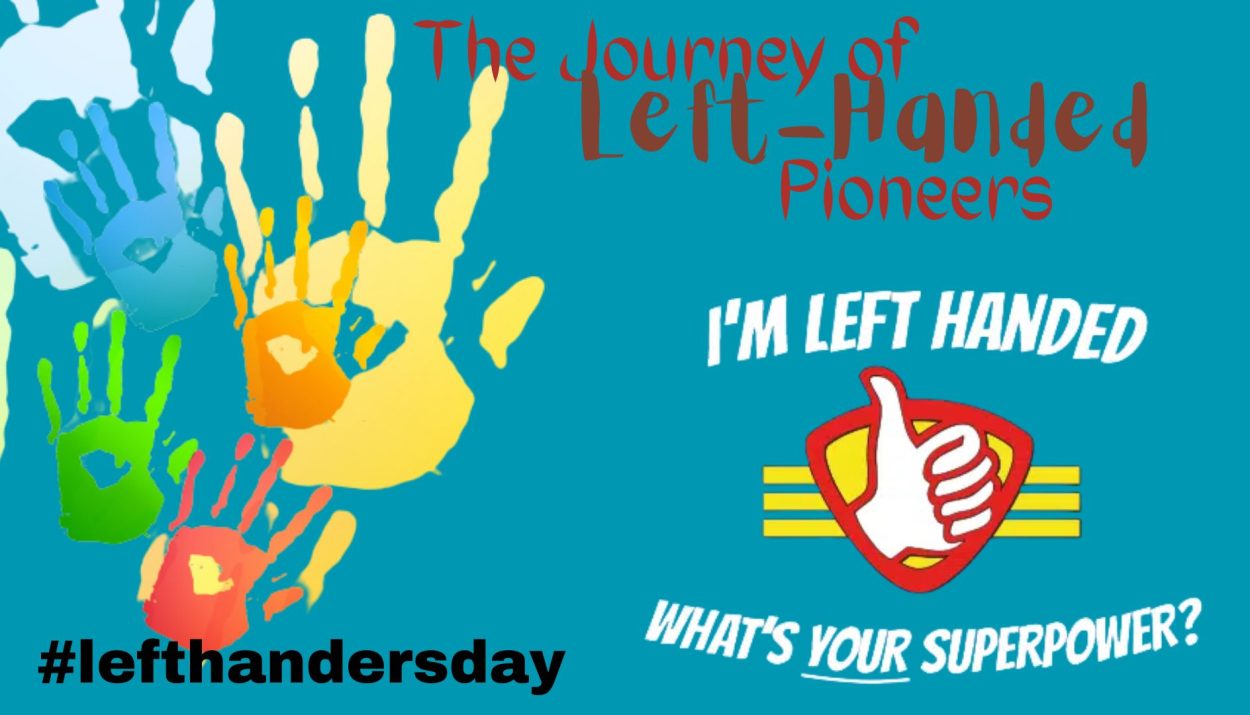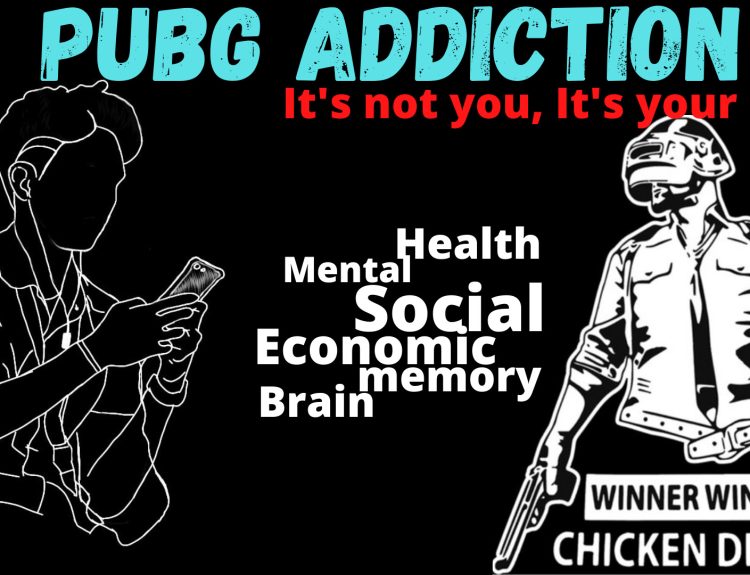In a world dominated by right-handed tools, traditions and structures, left-handers have long been an intriguing minority. Comprising roughly 10% of the global population, left-handers have faced challenges and curiosity throughout history. Yet, they also bring unique perspectives and talents to the table.
In numerous regions across the globe, the traditional custom of compelling children to utilize their “correct” hands persists. Interestingly, the term denoting the right hand also carries connotations of correctness or positivity, not only within the English language but also in various other languages. However, if favouring the right hand is considered so universally correct, what are the reasons behind the occurrence of left-handedness? Contrary to common belief, it’s important to note that handedness is not a conscious decision.
Left-handedness, scientifically known as “sinistrality,” is the preference for using the left hand over the right for tasks such as writing, eating, and throwing.
A Historical Odyssey
Archaeological findings indicate that this pattern has persisted for approximately 500,000 years, as around 10% of human remains display corresponding variations in arms length and bone density. Additionally, certain ancient tools and artefacts provide indications of left-hand utilization.
Left-handedness has a rich history, with both admiration and scepticism surrounding it. In ancient cultures, left-handedness was sometimes viewed as a sign of individuality or creativity, while in others, it was stigmatized as something unnatural. Ancient cultures often associated left-handedness with negativity, deeming it a sign of the devil or bad luck.

These misconceptions contributed to the stigmatization of left-handers, pushing them to conform to right-handed norms. However, historical figures such as Leonardo da Vinci, Albert Einstein and Joan of Arc were left-handed, showcasing that left-handers were more than their handedness – they were creative thinkers and innovators.
The Brain, Genetics, and Cognitive Traits Behind Handedness
Neuroscientists have discovered that handedness is rooted in the brain’s asymmetry. The dominant hemisphere of the brain controls the opposite side of the body – a phenomenon known as Lateralization. In most right-handed individuals, the left hemisphere of the brain is dominant, while in left-handers, the distribution can be more varied. This neurological diversity contributes to the unique cognitive traits often associated with left-handers, such as enhanced spatial reasoning and creative thinking.

Anticipating handedness before birth becomes feasible through observations of the fetus’s positioning in the womb. Consequently, if handedness is rooted in inherent traits, does this indicate a genetic foundation? The explanation is somewhat intricate. Despite sharing identical genes, identical twins can manifest distinct dominant hands. This occurrence is as frequent as it is among any pair of siblings. Nevertheless, the probability of being right or left-handed adheres to remarkably consistent ratios, influenced by parental handedness.
The presence of a genetic influence is logical, given that parents sometimes transmit handedness to their offspring. In cases where both parents are right-handed, the likelihood of having a left-handed child stands at 9%. However, if one parent is left-handed, this probability increases to 19%, and if both parents are left-handed, it further elevates to 26%.
A slightly higher prevalence of left-handedness is observed among boys compared to girls. This observation leads certain researchers to speculate that the male hormone testosterone might exert an influence on the development of right- and left-handedness.
Navigating a Right-Handed World
Despite the progress made in understanding left-handedness, challenges persist in a world designed primarily for right-handers. Everyday tools like scissors, computer mice, video game controllers, zippers, can openers, spiral notebooks, e-readers etc. are often designed with right-handed individuals in mind, leading left-handers to adapt or develop creative workarounds.
Even language is also against left-handers. To be correct is to be right… and correct is also a word that comes from “right”. Education systems can inadvertently favour right-handed students and even handwriting can be a struggle due to smudging issues. These challenges highlight the need for increased awareness and accommodation for left-handers.
Read- Language, Brain and Culture Interaction
Left-Handers Breaking Barriers
Research suggests that they might be more adept at tasks that require spatial awareness, creativity and problem-solving skills. Left-handed individuals enjoy an edge in various sports, spanning from fencing to boxing. This advantage extends to catching their right-handed opponents off guard, as athletes accustomed to competing against right-handed contenders find themselves in an unfamiliar situation when facing a left-handed opponent.
Left-handers have defied societal norms to excel in a wide range of fields. From sports to arts, politics to science, left-handers have left an indelible mark. Baseball great Babe Ruth, former U.S. President Barack Obama, and Nobel laureate Marie Curie are just a few examples of left-handers who have shattered glass ceilings. Their success underscores the importance of embracing diversity and recognizing the potential in all individuals, regardless of their handedness.
Celebrating Left-Handed Pride
In recent years, there has been a growing movement to celebrate left-handedness. International Left-Handers Day, observed on August 13th, is a testament to this movement. It’s a day dedicated to raising awareness about the experiences of left-handers, promoting inclusivity and challenging biases. This celebration not only recognizes the challenges faced by left-handers but also emphasizes the unique qualities that make them valuable contributors to society.

As societies become more inclusive, efforts to support left-handers have gained momentum. Educational institutions and workplaces are gradually becoming more accommodating, providing left-handed students and employees with tools and environments that suit their needs. Additionally, manufacturers are designing products tailored to left-handers, eliminating unnecessary obstacles from their daily lives.
Conclusion
Left-handers add a vibrant dimension to the tapestry of human diversity. As society becomes more attuned to the needs and talents of left-handers, it’s essential to continue breaking down the barriers that hinder their progress. Embracing their unique neurological makeup and celebrating their achievements can pave the way for a world where everyone can thrive, regardless of their dominant hand. Just as the left hand complements the right, diversity enriches the human experience, making our collective journey all the more colourful and exciting.
Numerous inquiries remain unresolved regarding the relationship between handedness and the brain. Nevertheless, this phenomenon continues to spark curiosity and dedicated researchers are actively working to unravel its mysteries. Over time, we may unravel its complexities and uncover additional intriguing attributes associated with handedness.
Read more
Left-handed DNA found – and it changes brain structure- BBC
20 ways being left-handed impacts your health- CNN







